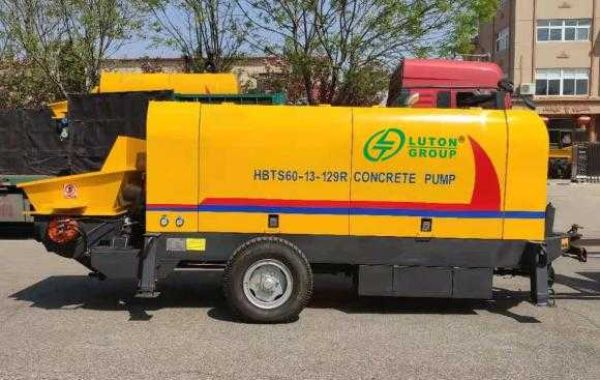Key Technologies Determining Concrete Piston Pumps
The key technologies that determine the concrete piston pump include the following aspects.
Sealing Technology
Piston Seal
The sealing effect between the piston and the cylinder directly affects the pumping efficiency. High-quality sealing materials such as rubber seals need to have good wear resistance, oil resistance and elasticity. For example, seals made of polyurethane can maintain good sealing performance under high pressure environment and prevent leakage of concrete slurry.
The reasonable design of the sealing structure is also critical. The multi-pass sealing structure can better cope with different pressure changes. For example, in some large concrete piston pumps, three-pass sealing is used, which can effectively reduce internal leakage and increase pumping pressure.
Hopper Seal
The seal at the connection between the hopper and the pump body should prevent the concrete from overflowing during mixing and pumping. Usually, flexible sealing materials such as silicone gaskets are used, which can not only adapt to the possible slight size deviations between the hopper and the pump body, but also ensure the reliability of the seal.
Hydraulic Drive Technology
Hydraulic System Pressure Control
Concrete piston pumps require precise hydraulic system pressure control. The pressure of the hydraulic system is monitored in real time by a pressure sensor, and then the output pressure of the hydraulic pump is adjusted according to the feedback signal. For example,when encountering a high-resistance delivery pipeline, the hydraulic system can automatically increase the pressure to ensure smooth concrete pumping.
Performance Of Hydraulic Cylinders
The stroke accuracy and speed stability of hydraulic cylinders are crucial to the continuity of concrete pumping. High-precision cylinder manufacturing processes can ensure the accuracy of piston movement and reduce the risk of concrete blockage caused by stroke errors. At the same time, the speed adjustment capability of the cylinder should be strong to adapt to different pumping speed requirements.
Concrete Distribution Technology
S-tube valve technology
The S-tube valve is a key component of the concrete piston pump. Its switching speed and sealing performance affect the pumping efficiency and quality. The fast-switching S-tube valve can reduce the possibility of blockage. In addition, the sealing surface of the S-tube valve should be smooth and wear-resistant to ensure that concrete will not leak from the valve port.
Intelligent control of the distribution system
With the help of sensors and control systems, precise control of concrete distribution is achieved. For example, according to the flow demand of concrete, the opening and closing time and frequency of the S-tube valve are automatically adjusted to improve the accuracy and efficiency of pumping.
Material and Structural Strength Technology
Material Selection Of Key Components
The cylinder body, piston and other high-pressure components of the piston pump need to be made of high-strength alloy steel and other materials. These materials have good compressive strength and fatigue performance and can withstand long-term high-load work.
Over Structural Design Optimization
Reasonable structural design can improve the stability and reliability of the pump. For example, the use of symmetrical structural design can make the pump evenly stressed during operation, reduce vibration and deformation, and extend its service life.








